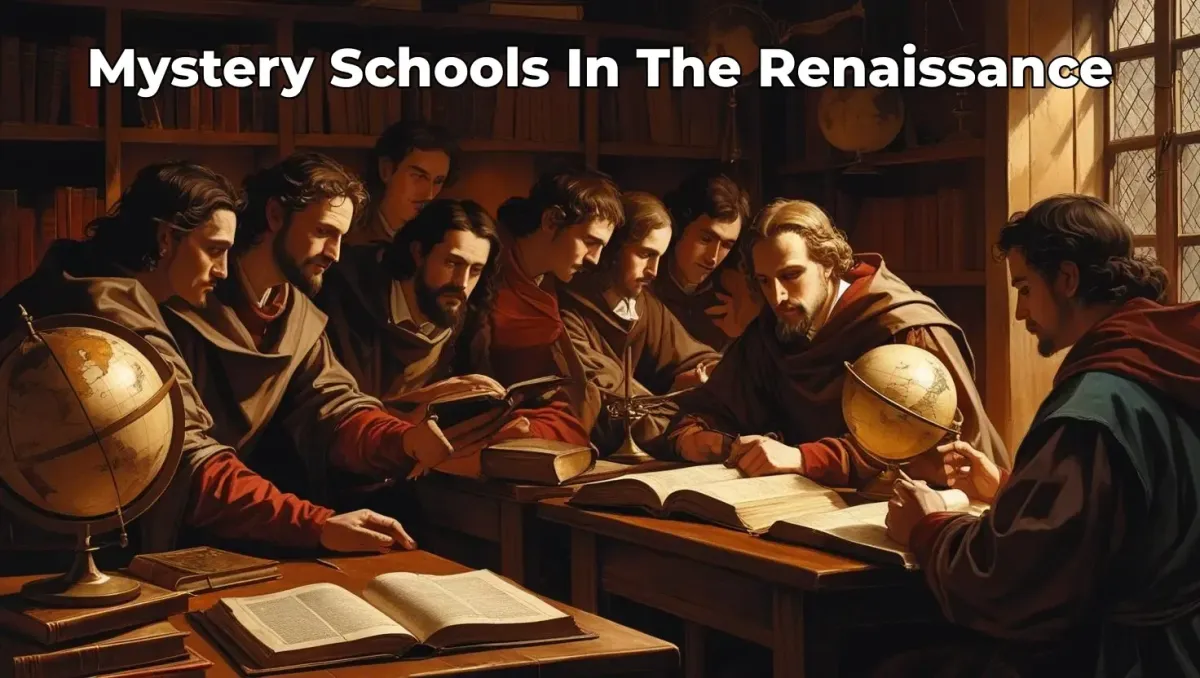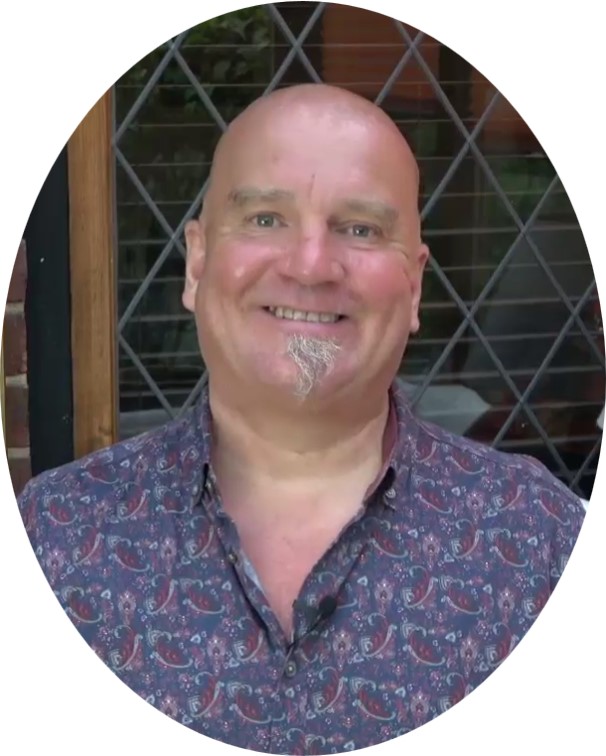
Mystery Schools in the Renaissance: Revival of Hidden Knowledge
The Renaissance was not only a rebirth of art and science — it was also a revival of the hidden knowledge of the mystery schools. Between the 14th and 17th centuries, Europe experienced a flowering of philosophy, art, and spirituality that blended classical wisdom with esoteric traditions.
Behind the paintings, inventions, and discoveries of the period lay an undercurrent of Hermeticism, Kabbalah, alchemy, and mystical philosophy. The Renaissance mystery school revival gave rise to a worldview that saw humanity not as a passive subject of divine fate but as a microcosm of the cosmos, capable of transformation and illumination.
In this article, we’ll explore how Renaissance thinkers rediscovered ancient wisdom, the role of Hermetic texts, the merging of esoteric currents, and the figures who embodied the revival of the mysteries.
New to mystery schools? Start with our overview article “What Are Mystery Schools?” and then visit the Mystery School hub for classes, courses and next steps.

Rediscovery of Hermetic Texts
The Renaissance mystery school revival began with a rediscovery. In 1460, a monk brought a Greek manuscript to Florence that would change Europe’s intellectual landscape. It was part of the Corpus Hermeticum — texts attributed to Hermes Trismegistus, the legendary fusion of the Egyptian Thoth and Greek Hermes.
These writings described the cosmos as a living, interconnected whole.
They emphasised “as above, so below” and the divinity within humanity.
They offered a vision of spiritual ascent through knowledge, meditation, and ritual.
Translated into Latin by Marsilio Ficino under the patronage of Cosimo de’ Medici, the Hermetic texts became the foundation of Renaissance esotericism (The Emerald Tablets & Hermes Trismegistus: Foundations of Mystery School Wisdom).
The Marriage of Kabbalah and Hermeticism
Alongside Hermeticism, Renaissance thinkers also engaged deeply with Jewish Kabbalah. The mystical diagrams of the Tree of Life, with its ten sefirot, offered a map of divine emanations and human ascent (Kabbalah and Hermetic Qabalah: The Tree of Life in Mystery Schools).
Through thinkers like Giovanni Pico della Mirandola, Kabbalah was woven into Christian and Hermetic contexts, creating what became known as Hermetic Qabalah.
The Tree of Life became a framework for meditation, ritual, and spiritual psychology.
Its structure mirrored the Hermetic principles of correspondence and emanation.
It provided Renaissance magicians with a symbolic key to the relationship between God, cosmos, and humanity.
This synthesis became a cornerstone of Western esotericism.
Context & Types (Plain English)
Natural magic — investigating nature’s “hidden properties” (optics, magnetism, plants, experiment). Think Giambattista della Porta’s Magia Naturalis (1558; greatly expanded 1589). (Encyclopedia Britannica)
Astral (astrological) magic — harmonising life with celestial influences (music, images, timing). See Marsilio Ficino’s De vita coelitus comparanda (1489). (Cambridge University Press & Assessment)
Learned/ceremonial magic — a scholarly synthesis drawing on angels, Kabbalah, numeration and correspondences, classically systematised by Heinrich Cornelius Agrippa’s De occulta philosophia (1533). (Encyclopedia Britannica)
Key Figures & Texts — At a Glance
Ficino (1433–1499): Platonist, translator of Plato and the Hermetica; framed astral medicine/magic in De vita (1489). (Stanford Encyclopedia of Philosophy)
Pico (1463–1494): The 900 Theses (1486) tried to reconcile philosophies and placed magic with Kabbalah at the centre of human perfectibility. (Stanford Encyclopedia of Philosophy)
Agrippa (1486–1535): Wrote the era’s most influential manual of learned magic; later issued a sceptical tract critiquing the arts and sciences. (Encyclopedia Britannica)
Della Porta (1535–1615): Popularised natural magic and practical experiment; topics ranged from optics to the camera obscura. (Encyclopedia Britannica)
Debates, Dating & Legacy (What Changed in 1614?)
Renaissance thinkers treated the Hermetic Corpus as ancient Egyptian wisdom; Ficino translated it into Latin and it catalysed the period’s “occult philosophy.” In 1614, philologist Isaac Casaubon argued—based on language and content—that the Corpus was late antique (1st–4th c. CE), not primeval; this re-dating reshaped scholarship while practice traditions continued to evolve. Later historians (e.g., Frances Yates) highlighted Hermetism’s Renaissance impact; more recent work revises and nuances that story. (Bryn Mawr Classical Review)
Alchemy in the Renaissance
Alchemy, too, saw a great revival in the Renaissance. While modern caricatures reduce it to failed chemistry, the mystery schools understood alchemy as a metaphor of inner transformation (Alchemy and the Mystery Schools: The Inner Gold of Transformation).
Renaissance alchemists worked with both matter and spirit:
Material level: Experiments with metals, distillations, and elixirs.
Spiritual level: The purification of the soul, turning the “lead” of ego into the “gold” of enlightenment.
Alchemy’s imagery — furnaces, retorts, the philosopher’s stone — became symbolic language for inner rebirth.
The Role of Magic and Theurgy
The Renaissance also saw a revival of ceremonial magic and theurgy (Theurgy and Ritual Mastery: Invoking the Divine in Mystery School Initiation).
Thinkers like Ficino and Pico believed that through ritual, prayer, and symbolic action, humanity could commune with the divine and harmonise with celestial forces.
Astrology guided rituals in tune with planetary alignments (Astrology, the Stars, and the Mystery Schools).
Music and mathematics were used to mirror the “music of the spheres.”
Magical texts like the Picatrix circulated, blending Arabic, Jewish, and Greek traditions.
Magic, in this context, was not manipulation but participation — a way of aligning human consciousness with cosmic order.
Renaissance Figures Who Carried the Flame
The revival of mystery school knowledge was embodied by remarkable figures:
Marsilio Ficino (1433–1499): Translator of the Corpus Hermeticum, synthesiser of Platonic and Hermetic wisdom.
Giovanni Pico della Mirandola (1463–1494): Philosopher who united Kabbalah, Hermeticism, and Christian mysticism in his Oration on the Dignity of Man.
Paracelsus (1493–1541): Physician and alchemist who revolutionised medicine with esoteric insights.
John Dee (1527–1608): Mathematician, astrologer, and magician who sought angelic communication (John Dee and the Hidden Knowledge of the Renaissance Mystery Schools).
Leonardo da Vinci (1452–1519): Artist and inventor who encoded sacred geometry and symbolism in his work (Leonardo da Vinci and the Secret Codes of the Mystery Schools).
Together, they exemplify how the Renaissance mystery revival shaped art, science, philosophy, and spirituality.
The Renaissance Worldview
The mystery school revival of the Renaissance fostered a worldview radically different from medieval scholasticism:
The cosmos was alive, intelligent, and interconnected.
Humanity was a microcosm, containing within itself the patterns of the macrocosm.
Knowledge was not only rational but intuitive, symbolic, and experiential.
Spiritual ascent was possible through philosophy, ritual, and inner transformation.
This worldview became the foundation for much of modern Western esotericism, influencing movements from Rosicrucianism to Freemasonry.
Why the Renaissance Mystery Revival Still Matters
The Renaissance reminds us that knowledge and imagination go hand in hand. At its heart, the mystery school revival:
Reconnected Europe with ancient wisdom traditions.
Inspired breakthroughs in art, science, and medicine.
Offered a vision of humanity as divine, creative, and capable of transformation.
In today’s world, rediscovering this spirit can help us move beyond narrow materialism into a holistic understanding of life — where science, art, and spirituality support one another.
To trace the roots of these teachings, revisit What Are Mystery Schools? The Hidden Lineage of Ancient Wisdom.
Safety & Ethics — a Quick Note
Engage Renaissance magic as history and symbolism, not medical advice or miracle technology. Prefer teachers who show transparency (pricing, refunds), realistic claims, boundaries and aftercare. Decline pressure, secrecy-for-payment, or grand promises. If your body says “no,” pause and seek another view.
Next Steps On Your Mystery School Path
If this article spoke to you, don’t leave it as just an interesting idea. Take one gentle step to deepen the journey.
·Visit the Mystery School hub to see all classes and courses in one place.
·Explore Beyond The Veil for a structured, step-by-step dive into spiritual transition and symbolic history.
Continue reading with these related articles:
Sacred Geometry: Patterns of the Divine in Mystery School Teachings
Leonardo da Vinci and the Secret Codes of the Mystery Schools
Choose the one that feels kindest and most alive for you right now, and let the work unfold at your own pace.

The Renaissance revival of the mysteries shows us that hidden wisdom has always been part of human culture — and still has much to offer today.
At the Bright Beings Academy Mystery School, you can explore Hermeticism, Alchemy, Kabbalah, Astrology, and more — the very teachings that fuelled the Renaissance awakening.

FAQs on Mystery Schools In The Renaissance
What role did Hermetic texts play in the Renaissance?
The rediscovery of the Corpus Hermeticum introduced a vision of the cosmos as alive and interconnected, inspiring philosophers and magicians.
How did Kabbalah influence Renaissance thought?
It provided a symbolic map of divine emanations and human ascent, merged with Hermeticism to create Hermetic Qabalah.
Was Renaissance alchemy only about turning lead into gold?
No. Alchemy symbolised inner transformation — purifying the soul into spiritual gold.
Who were key figures in Renaissance mystery traditions?
Ficino, Pico, Paracelsus, John Dee, and Leonardo da Vinci all embodied Renaissance esotericism.
FAQs — Renaissance Magic in Context
Is Renaissance magic the same as witchcraft?
No. “Learned” magic was largely scholarly and text-based (Ficino, Pico, Agrippa), distinct from early-modern witchcraft accusations in courts and popular culture. (Stanford Encyclopedia of Philosophy)
What’s the difference between natural, astral and ceremonial magic?
Natural looks to hidden properties in nature (della Porta); astral to celestial harmonies (Ficino); ceremonial/Agrippan integrates angelology, Kabbalah, numeration and ritual frames. (Encyclopedia Britannica)
Did “Hermetic” texts really come from ancient Egypt?
Renaissance thinkers thought so; Casaubon (1614) dated them to late antiquity, which most scholars accept today. (Bryn Mawr Classical Review)
Why is Pico important?
His 900 Theses placed magic and Kabbalah within a grand project of unifying wisdom traditions—hugely influential on later esoteric thought. (Stanford Encyclopedia of Philosophy)
Is Agrippa reliable if he later wrote a sceptical book?
Yes to influence: his De occulta philosophia remained the standard synthesis even as he later critiqued human knowledge in general. Read him as a window into the period, not a final authority. (Encyclopedia Britannica)
Where do practice and experiment meet?
Natural magic texts often blend observation with wonder—optics, magnetism, lenses. Treat them as history of ideas, not prescriptions. (Encyclopedia Britannica)
Further reading
Neoplatonism and Theurgy: The Simple Map Behind Western Mysticism
The Emerald Tablet and As Above, So Below: A Plain-English Explainer
Alchemy Stages: Nigredo to Rubedo — The Inner Transformation Map
How to Vet a Mystery School: Ethics, Fees, Promises & Red Flags
I look forward to connecting with you in my next post.
Until then, be well and keep shining.
Peter. :)
